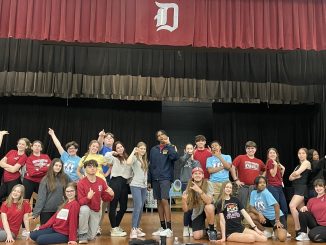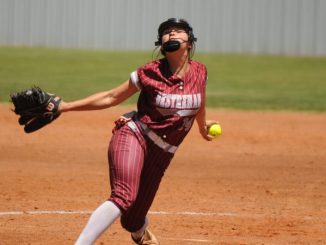
Space may be the final frontier for bold new worlds, but Jennifer Green’s classroom could easy qualify as one of them.
Green, a sixth-grade teacher at R.K. Smith Middle School in Luling, was awarded a grant from the Louisiana Space Grant Consortium and joined educators from across the nation for the LiftOff Summer Institute at NASA’s Johnson Space Center in Houston, Texas. Sponsored by NASA’s Texas Space Grant Consortium, teachers from across the U.S. who increased their knowledge of space education through this professional development summer institute.
“I feel like our schools are really helping students develop the skills they will need in the 21st century and beyond by providing so many opportunities for them to work collaboratively, share ideas, ask questions, and think critically,” she said. “It’s awesome to think that I get the opportunity to teach students who may be involved in getting us to Mars in the future.”
Green recently returned from LiftOff, a collaborative effort of Texas Space Grant Consortium members and affiliates, NASA and industry. Teachers apply for the program and are selected competitively.
The workshops are organized around an aerospace or space science theme drawn from NASA’s diverse engineering and scientific research programs. The theme for LiftOff 2019 was Legacy of Apollo, celebrating the 50th anniversary of our landing on the moon.
“This was such a special time to be at NASA as our nation prepares to celebrate the 50th anniversary of Apollo 11 moon landing,” Green said. “One of the most encouraging parts of the week at NASA was hearing from the different astronauts, scientists, and engineers about the paths that led them to NASA.”
These stellar people came from diverse backgrounds and had varied interests and skills, she said. With their insights, the sky isn’t the limit – it’s just the beginning.
“As we plan to be back on the moon by 2024 and then on to Mars, there are so many skills that will be needed … not just scientists and engineers, but also technicians, artists, farmers, business administrators and more,” she said.
Green learned this impressive effort takes great minds working together to make it happen.

“Sitting in mission control and watching the specialists monitor the activity on the International Space Station, another thing really stuck out to me – nothing they do at NASA is a one-person job; from landing on the moon to landing a rover to Mars to sending astronauts to the International Space Station, everything they do is a team effort,” she said.
Opening the weeklong institute was a presentation by former Astronaut Clay Anderson who shared “Turn Pages into Dreams.” Two additional astronauts spoke to the educators during the week: Apollo XIII astronaut Fred Haise shared his momentous experience and Jerry Ross shared his experiences as a seven time space walker.
Celebrating the Apollo anniversary, teachers heard from several scientists and engineers from the astromaterials department from NASA Johnson Space Center. John Gruener shared “What We Learned from Apollo,” Paul Niles talked about the new “Moon2Mars” initiative, and Samuel Lawrence spoke on “Exploring the Moon in the 21st Century.”
Teachers increased their knowledge of working and living in space while visiting scientists and engineers in the Astromaterials Lab where they viewed the Apollo Moon Rocks, Genesis Lab, Stardust Lab, and CT chamber. The experience continued during tours of the Food Lab, Neutral Buoyancy Lab, and Spacesuit lab. Norm Chaffee, Apollo-era rocket engineer, provided a thorough explanation as he walked the teachers through the Saturn V rocket.
The workshops also provide teachers the rare – and for most, unique – opportunity to spend a week working with professional scientists and engineers at the cutting edge of space exploration.
“Going ‘behind the scenes’ at NASA and meeting astronauts, networking with other educators from around the country to share lesson ideas, and becoming certified to check out the Lunar and Meteorite Samples were definitely some of the highlights of the program,” explained Green. “I can’t wait to share what I’ve learned with my students in the upcoming school year.”




Be the first to comment